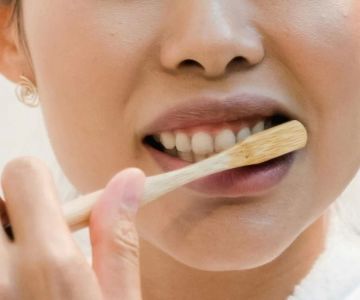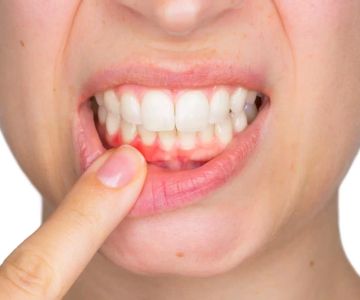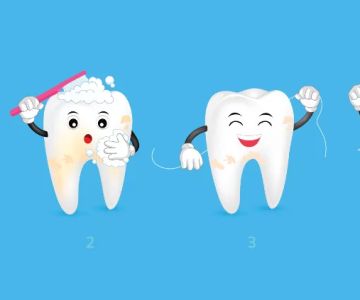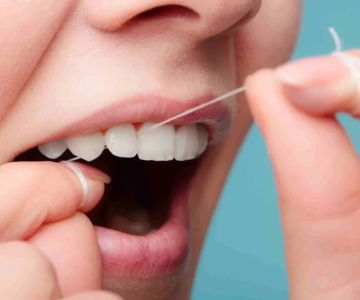How to Prevent Tooth Discoloration: Effective Tips for a Brighter Smile
- Understanding Tooth Discoloration
- Common Causes of Tooth Discoloration
- Importance of Good Oral Hygiene
- Diet and Lifestyle Changes to Prevent Discoloration
- Whitening Treatments and Options
- When to Visit the Dentist for Tooth Discoloration
Understanding Tooth Discoloration
Tooth discoloration is a common dental concern that affects people of all ages. Whether caused by lifestyle habits, natural aging, or poor oral hygiene, tooth discoloration can make a significant impact on the appearance of your smile. Discolored teeth can range from yellowing and staining to more severe discoloration, which may affect your confidence and self-esteem.
Fortunately, preventing tooth discoloration is often achievable with the right approach to oral care. In this article, we’ll explore the causes of tooth discoloration and provide practical, effective tips to help you maintain a bright, healthy smile for years to come.
Common Causes of Tooth Discoloration
Tooth discoloration can occur for a variety of reasons, many of which are related to everyday habits and health conditions. Here are some of the most common causes:
- Poor Oral Hygiene: Insufficient brushing and flossing can cause plaque and tartar buildup, which can lead to yellowing of the teeth.
- Dietary Factors: Foods and beverages such as coffee, tea, red wine, and acidic fruits can stain teeth over time, especially if consumed frequently.
- Smoking or Tobacco Use: The nicotine and tar in tobacco products are known to stain teeth, causing them to darken or yellow.
- Age: As we age, the enamel on our teeth naturally wears away, revealing the yellowish dentin beneath the surface.
- Genetics: Some people may naturally have thicker or more porous enamel, which can make their teeth more susceptible to discoloration.
- Medications: Certain medications, such as antibiotics or antihistamines, can cause tooth discoloration as a side effect.
Understanding the root causes of tooth discoloration is the first step in taking action to prevent it.
Importance of Good Oral Hygiene
Maintaining a consistent oral hygiene routine is one of the most important steps in preventing tooth discoloration. Good oral hygiene helps remove plaque and food particles that contribute to staining and buildup on the teeth. Here are the key habits to incorporate into your daily routine:
- Brushing Twice a Day: Brush your teeth at least twice a day with fluoride toothpaste to remove stains and prevent plaque buildup.
- Flossing Daily: Flossing helps remove food particles and plaque from between your teeth, where your toothbrush may not reach.
- Regular Use of Mouthwash: Mouthwash helps kill bacteria and freshen your breath while also providing additional protection against plaque.
- Choosing the Right Toothbrush: Use a soft-bristled toothbrush and replace it every three to four months to maintain optimal cleaning power.
By following these basic oral hygiene practices, you can significantly reduce your risk of developing tooth discoloration and keep your smile looking its best.
Diet and Lifestyle Changes to Prevent Discoloration
Your diet and lifestyle choices play a huge role in the health and appearance of your teeth. If you’re concerned about tooth discoloration, consider making the following changes:
- Avoid Staining Foods and Drinks: Limit your intake of coffee, tea, soda, and wine, as these drinks can stain teeth over time. If you must consume them, consider rinsing your mouth with water afterward.
- Eat Foods that Promote Healthy Teeth: Crunchy vegetables like carrots and celery can help remove food particles from your teeth, while dairy products like cheese can promote enamel health.
- Quit Smoking: If you smoke or use tobacco products, quitting can have a significant impact on both the appearance of your teeth and your overall oral health.
- Drink Water: Drinking plenty of water throughout the day helps wash away food particles and neutralizes acids in the mouth that can contribute to staining.
Small changes in your lifestyle can make a big difference in preventing tooth discoloration and promoting long-term oral health.
Whitening Treatments and Options
If tooth discoloration has already become an issue for you, there are a variety of whitening treatments available to restore your smile. Professional teeth whitening treatments, offered by dentists, are typically the most effective option, as they use stronger bleaching agents to achieve noticeable results.
For those looking for at-home solutions, over-the-counter teeth-whitening products, such as strips, gels, and toothpaste, can be effective when used consistently. However, it’s important to choose products that are safe and approved by dental professionals to avoid damaging your enamel.
Before starting any whitening treatment, it’s best to consult with your dentist to determine the best approach based on your specific needs and the severity of the discoloration.
When to Visit the Dentist for Tooth Discoloration
If you’re struggling with persistent or severe tooth discoloration, it’s important to seek professional dental care. Your dentist can assess the cause of the discoloration and recommend appropriate treatments or interventions to restore your smile. In some cases, tooth discoloration may be a sign of underlying dental issues, such as cavities or gum disease, which require immediate attention.
Visiting your dentist regularly for checkups and cleanings is also crucial for preventing tooth discoloration and maintaining optimal oral health. Professional cleanings help remove plaque buildup and stains that can’t be addressed with at-home brushing alone.







 Westgate Dental Arts3.0 (2 review)
Westgate Dental Arts3.0 (2 review) Coventry Family Dental4.0 (247 review)
Coventry Family Dental4.0 (247 review) Familia Dental3.0 (1028 review)
Familia Dental3.0 (1028 review) Dr. Daniel S. Fife, DDS4.0 (31 review)
Dr. Daniel S. Fife, DDS4.0 (31 review) Dentistry At Suburban Square: Michael I. Wollock, DMD4.0 (1228 review)
Dentistry At Suburban Square: Michael I. Wollock, DMD4.0 (1228 review) Comfort Care Dental4.0 (1156 review)
Comfort Care Dental4.0 (1156 review) The Importance of Oral Health Education During Pregnancy for a Healthy Pregnancy
The Importance of Oral Health Education During Pregnancy for a Healthy Pregnancy Why Skipping Dental Checkups Can Lead to Bigger Oral Health Problems
Why Skipping Dental Checkups Can Lead to Bigger Oral Health Problems Best Tips for Brushing Your Teeth Properly for Healthy Gums: Essential Techniques for Oral Health
Best Tips for Brushing Your Teeth Properly for Healthy Gums: Essential Techniques for Oral Health Advantages of Porcelain Dental Restorations
Advantages of Porcelain Dental Restorations How Can Diabetes Cause Tooth and Gum Problems? Preventing and Managing Oral Health Issues
How Can Diabetes Cause Tooth and Gum Problems? Preventing and Managing Oral Health Issues Healthy Habits for Promoting Good Oral Health and Hygiene: Tips for a Healthy Smile
Healthy Habits for Promoting Good Oral Health and Hygiene: Tips for a Healthy Smile